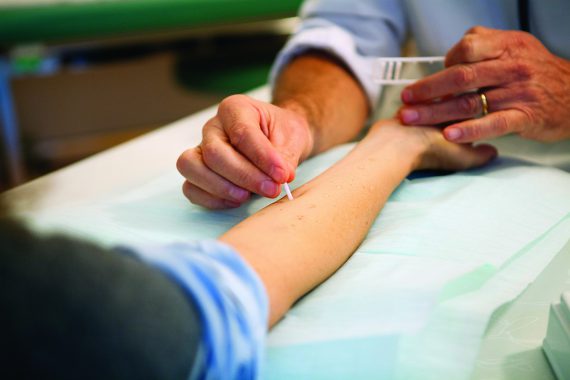Guideline of the month – identifying patients at high risk in nut allergy

The guideline
The British Society for Allergy and Clinical Immunology (BSACI) has released a new guideline for the diagnosis and management of peanut and tree nut allergy, highlighting the role of individual protein-specific IgE testing in diagnosis and identifying those at greatest risk of serious reaction.
Key points for GPs
- Detailed history, skin-prick tests and total nut IgE should be used in conjunction to diagnose allergy.
- Component-specific IgE testing against specific proteins in specific nuts offers a good prediction of who is at risk of a serious reaction and how an individual may react to the nut in the future.
- Patients need comprehensive management plans, including advice on avoidance, nut recognition and training in the use of emergency medications such as adrenaline autoinjectors.
- In children, the management plan needs to be extended to include grandparents, nursery or school.
- All patients should be supplied with oral antihistamines. Adrenaline autoinjectors should be supplied based on the individual’s circumstances and following risk assessment.
Practical issues
Patients need comprehensive advice and plans for managing their allergy, so GPs have an important role in educating patients. Component-specific IgE tests are highlighted as an important means to identify nut-allergic patients and predict the severity of their reaction in the future. GPs need to be aware of it and consider referring patients for the test if necessary.
Expert comment
Dr Helen Howells, GPSI in allergy and BSACI primary care group chair, said: ‘The guidelines highlight that a good allergy-focused history is the cornerstone of diagnosis for nut allergy. GPs play a fundamental role in recording this and may then be guided by blood tests to make a diagnosis. This should help aid early referral to ensure the right management and guidance. GPs also have a key role in the early introduction of nuts into the diet and in allergy prevention, although more guidance is needed here.’
The guideline
Pulse October survey
Take our July 2025 survey to potentially win £1.000 worth of tokens

Visit Pulse Reference for details on 140 symptoms, including easily searchable symptoms and categories, offering you a free platform to check symptoms and receive potential diagnoses during consultations.









